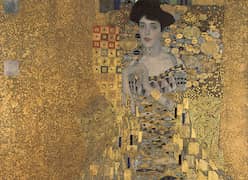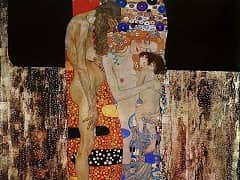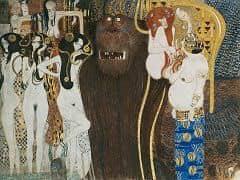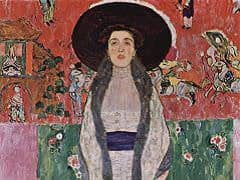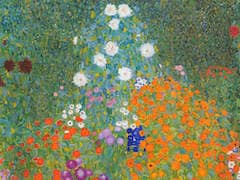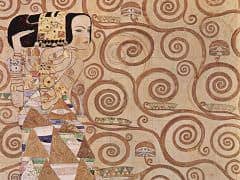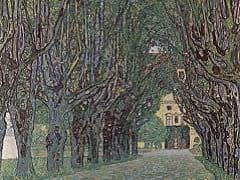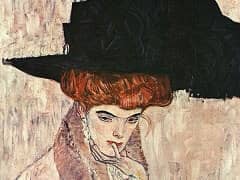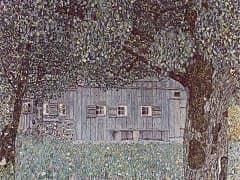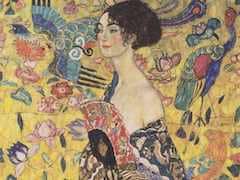The Bride, 1918 by Gustav Klimt
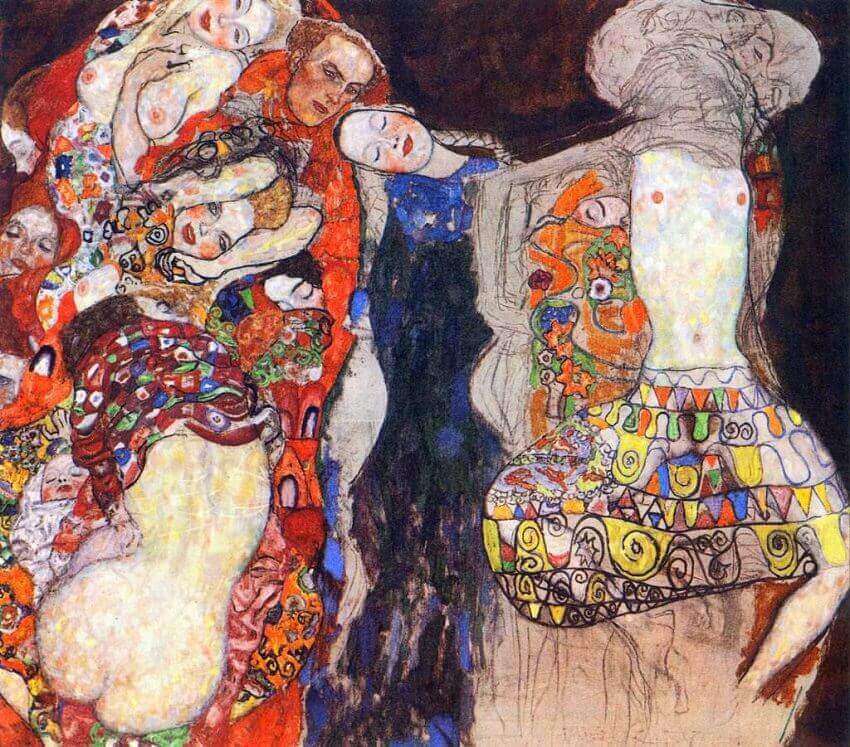
Although he was a delightful painter of landscapes, women were Klimt's theme above all others.
Richard Muter, in a newspaper review of 1909, claimed that "the new Viennese woman, a specific sort of new Viennese woman - their grandmothers were Judith and Salome - has been invented or discovered by Klimt. She is delightfully
vicious, charmingly sinful, fascinatingly perverse."
Klimt was certainly able, like certain couturiers and fashion photographers, to make his sitters and models look extraordinarily glamorous. In his later portraits, the work for which above all he is famous, his strategy was to
retain the academic realism of his earlier work for the face and figure of the subject.
But he dissolved the rest of the image in luxuriant decoration, derived from Byzantine mosaics, Celtic design, and the Oriental textiles and ceramics that filled his studio. The effect is sumptuous, sensual, near-abstract but not
too dauntingly avant-garde.
That ornament, however, tended to be filled with meaning. When Klimt died, an unfinished painting entitled The Bride was left in his studio. The right half was dominated by a semi-naked female figure.
As the art historian Alessandra Comini described it, "The knees were bent and the legs splayed out to expose a carefully detailed pubic area on which the artist had leisurely begun to paint an overlay 'dress' of suggestive and symbolic ornamental shapes."
Thus Klimt's own death revealed the sexual obsession that lay beneath his shimmering surfaces.



